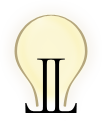
Photo by Pimthida
The holiday season brings hopes and expectations of a happy, warm, loving family experience. From the end of October until the end of December we are immersed in the theme of seasonal joy and family togetherness. Movies, TV shows, and music all act in concert to reinforce this theme.
Fantasy vs. Reality
With so many messages perpetuating this idealized notion of the holidays, it’s no wonder that many of us find ourselves hoping that those dreams will come true. Childhood fantasies of kind parents and understanding families can be re-awakened, often without our even noticing.
But the reality can be quite different. For example:
- Your family may remain dysfunctional. Dad is still judgmental and autocratic, mom is still passive aggressive, brother is self centered and sister is checked out.
- You may be facing the holidays alone: recently separated or divorced, widowed, mourning the death of a parent or a child.
- Work may have intruded and you are in a foreign city, away from friends and family.
- You or a family member may be facing the challenge of a chronic or sudden illness
The variations are myriad but they all present a similar challenge: how to best maintain your own emotional well-being during the holiday season.
Three Keys
Like the three wise kings, we can use three keys to insure that we can enjoy a holiday season marked by good cheer.
Calm Codependency. Placing too much focus on another person, or making the other person and their behavior more important to you than yourself, creates codependency. Learning to step back and disengage can be incredibly liberating.
Take time to calm yourself, put your relationships into a more balanced perspective. It’s fine to care about others but you don’t want to cross the line into codependency where their needs and wants take up an inordinate amount of your energy and emotional reserves.
When you give another person the power to define you, then you also give them the power to control you.
Leslie Vernick, The Emotionally Destructive Relationship
Contain Craziness. This is a natural follow up to stepping away from codependency. Here you begin to set healthy emotional and physical boundaries. You don’t let others’ excessive demands violate your own sense of well being.
Give yourself permission to speak up about what you want and need. Don’t agree to a proposition because you’re afraid of hurting the other person’s feelings or are scared of an angry response. Above all don’t be manipulated by guilt.
Guilt: punishing yourself before God doesn’t.
Alan Cohen, Why Your Life Sucks
Continue Communication. Above all, remember to keep your good communication skills intact. Speak about what is problematic as soon as possible in a neutral and balanced fashion. Don’t let resentments build.
This makes for those ugly explosive holidays exchanges wherein everyone comes away feeling battered and bruised emotionally. Instead, commit to open exchanges and mutual understanding. Express yourself clearly and politely. Maintain respect. Use I messages and Active Listening.
Holding onto anger is like grasping a hot coal with the intent of throwing it at someone else; you are the one who gets burned.
Buddha
The Gift of Good Cheer
Taking these simple steps can go a long way toward warding off some of the more egregious displays of familial dysfunction. Give yourself the gift of a happy holiday season.

Photo by Ängsbacka Kursgård
These things I have spoken unto you, that in me ye might have peace. In the world ye shall have tribulation: but be of good cheer, I have overcome.
John 16:30




























